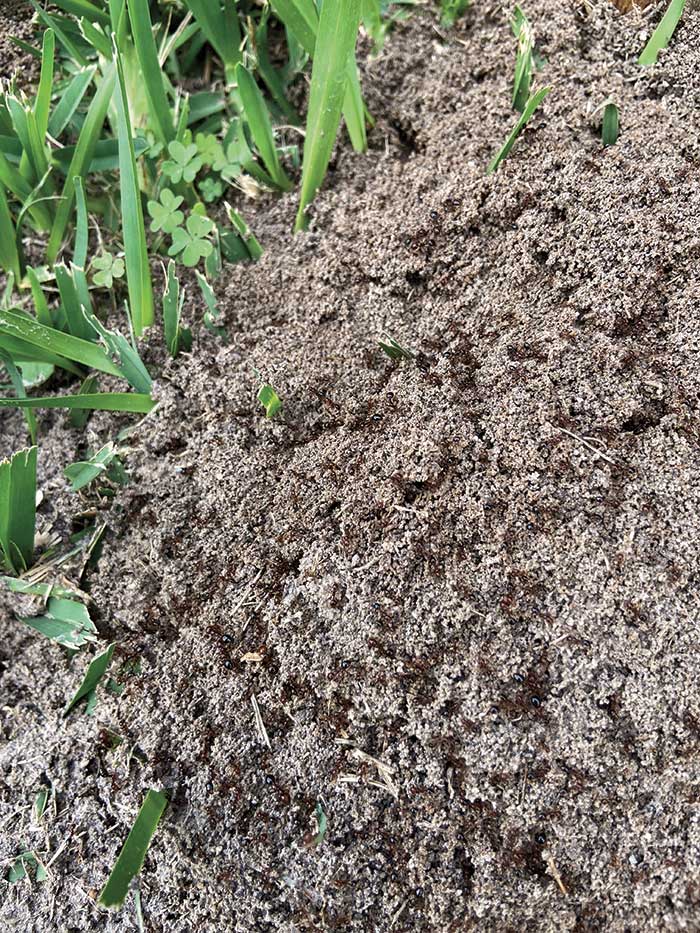Turf Pest of the Month: How to keep fire ants at bay
Fire ants can be easily identified by the mounds they build — a useful piece of information to avoid getting too close to the female fire ants, which can sting.

Unlike many other ant species, fire ants can be identified by the mounds they build. (Photo by: Control Solutions Inc.)
“They typically like building their mounds in areas that are disturbed, such as where two different types of turf come together or along curbs and the edging of golf cart paths,” says Janis Reed, Ph.D., board-certified entomologist and technical services manager for the pest control division at Control Solutions Inc. “Most people know they have encountered fire ants because they got stung by one.”
For those who dare to take a closer look, fire ants typically sport a reddish/brown color. They have two nodes between the thorax and gaster, 10-segmented antennae and a two-segment club at the end of each antenna.
The pests mostly dwell in southern states and are most active after rain. During the winter, they reside deeper in the soil, but because they mostly thrive in warm-weather states, fire ants are active all year long.
The damage fire ants cause is two-pronged, Reed says.
“There’s an aesthetic damage up through the turf due to their mounding activities,” she says. “There’s also the damage to a worker or a golfer who may reach down to pick up a ball and instead get five or six fire ants on them and be stung.”
To help keep fire ants under control, Reed recommends putting out fire ant baits both at the beginning and end of the season.
“They are easy to apply and don’t take any specialized equipment,” she says. “The most effective time for bait applications is in the fall because you’re attacking those fire ants when they’re going into the lean winter months. If you can knock down numbers at that time of year, you can get the best control.”
Reed says the main cultural practice to help control fire ants is to keep the turf healthy, but on golf courses, there is a lot of disturbance — golf cart paths, cup cutting, golfers inflicting divots into the grass — so it’s important to address both play and nonplay areas.
“You can cover a large area without a lot of product,” Reed says. “It pays to manage fire ants over time rather than just when they become a problem.”












